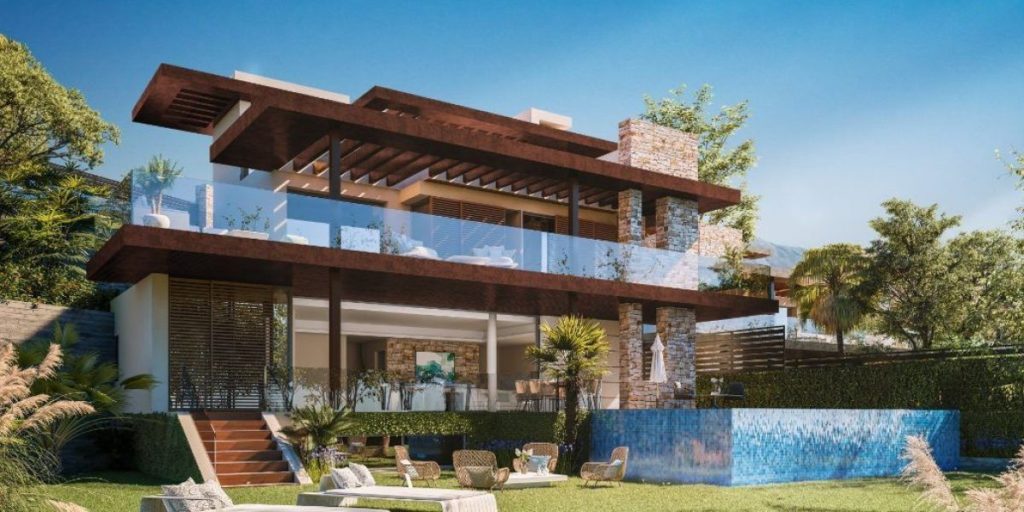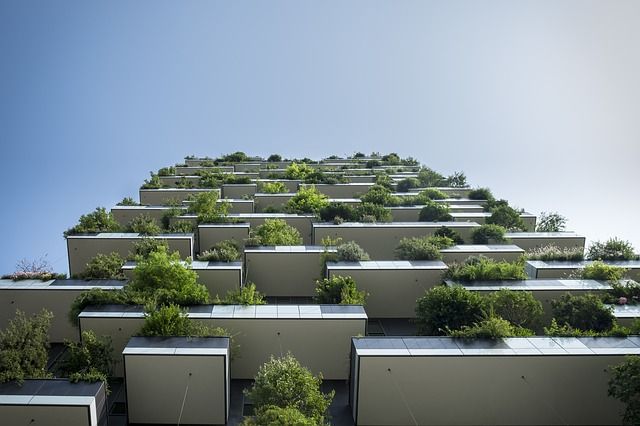This section offers tips on viewing properties in Spain during the process of house hunting.
This is a very important part of the purchase process as it helps you find a property that suits your needs. You must prepare well for this if you don’t want to waste time looking at inappropriate properties and end up choosing a commonplace property from an average list of choices.
As much as you want to purchase the ‘dream ‘property, you have to be aware that it might not exist. To avoid getting frustrated, try and find the best property on the market rather than the perfect one as you mind end up with nothing or have to compromise.

While you might not escape making compromises, the trick is for you to identify the property that best suits you and will fit your budget. Afterwards, decide whether it’s worth it making the compromise or not. Remember that if you find a nice property that you can live with, you will end up turning it into your home and then won’t want anything different. The anxiety of wondering whether there was something better on the market will soon be forgotten. Where to draw the line is up to each individual, but once you go beyond 3 or 4 fruitless property visits you might have to re-examine what you are trying to achieve and how you are going about it.
Visit objectives
Having clear objectives will help you achieve the best results from your search. To do so we recommend checking our guide on How To Define Your Property Needs in Spain. The obvious objective is to identify one or more properties that you could consider buying. Afterwards, gather as much detailed information as you need during the viewing process before making an offer.
Another important objective is for you to understand the market for your type of property and get a feel for current prices. This is because properties are unique and it’s therefore impossible to calculate the exact price. It’s possible to use the asking price and compare it with other similar properties in the area to get a rough idea and decide. Having an idea of the market price for the property is ideal as it can help you avoid overpaying. An estate agent will give you some idea of recent sale prices for comparable properties to help you in the decision-making process.

Go prepared
Since you might not have a lot of time to view many properties, ensure that you’re prepare. It’s advisable to carry along the following: phone, measuring tape, local map, notepad and pen and a bottle of water in case it takes longer than expected.
Focus on the best, eliminate the rest
It’s possible that you’ll view numerous properties that don’t interest you in any way. Don’t waste your time on them; only pay attention to those that interest you even as you make comparisons. Put down the information in a comparative table to help you get a quick overview and draw conclusions.
Inspecting target properties
If you’re lucky, you could view one or more properties that will interest you. Once you identify them, get serious with the inspection, and gather as much information as possible about them. If you’ve identified more than one, rank them in order of preference based on the information gathered. There will of course be an important emotional element in your decision – there always is when buying property for personal use – but you also need solid information to help you make the best decision. This information will help you estimate how much money, if any, you will need to invest in refurbishing a property once you have bought it.
It’s possible to identify a target property on the first visit, more so if you see yourself living there. It’s more than likely that you will be able to revisit (if you have the time), giving you another chance to inspect it further. To be on the safe side, assume that the first visit is the only chance you have to know the property.

Information gathered during the visits is not part of the legal or administrative checks. Due diligence is done by your lawyer or surveyor or other qualified professional when you move onto making an offer and negotiating with the vendor.
When inspecting a target property you want to carry out as many of the checks discussed below as possible. If you work with a qualify real estate agent, they will advise you and let you know of the condition of the property and all its details.
However you might still want to take notes of everything you observe and make quick sketches or take photos where possible. Not all of these checks may be applicable in your case, and some of the checks can be done after the visit and don’t require that you are physically present in the property.
Property structure & condition
Identify supporting walls and check their condition. Look for serious cracks or other signs of distress in main structural features (supporting walls, beams, retaining walls, pool casing, etc.). It’s possible to identify obvious structural issues and minor cosmetic problems with an untrained eye. The trick is to identify and scrutinise the structural elements. Structural problems are the most complicated and expensive to resolve, so it is important to identify signs of them. Bulging walls are a bad sign. Sagging roofs are another bad sign that might indicate the need for major building reforms.
Even though it’s not common, always bear in mind subsidence. Subsidence is often caused by changing water content in clay soils, which causes the soil to swell and contract, thus undermining a property’s foundations. Changing water content can be caused by a falling water table or by trees and bushes absorbing water during an unusually dry spell. Subsidence can also be caused by water leaks that wash away soil under the foundations of a property, in this case when the soil has a high sand or gravel content. Naturally low water tables and a dry climate might explain why Spain doesn’t appear to have much of a problem with subsidence, but keep it in mind. A professional survey is required if you have any doubts about subsidence, and is a good idea in any event.

Pay attention to the roof. Is it a pitched roof or a flat roof? If a pitched roof what condition are the tiles in (or other surface materials)? If it’s a flat roof can you get onto it to check the waterproofing? Look for signs of a leaky roof both inside and outside the property.
Damp is another important issue to look out for, which can affect newly built properties just as much as resale properties. It is usually easy to spot and can rise from the soil through the foundations, can come through the walls or can come down from leaky roofs or other sources of poor drainage. If you see damp you need to try and estimate the cause based upon its location in the property. It can always be treated with damp proofing, but this can be a big job depending upon the cause and location of the damp. It may not be a big problem but you do need to identify if there are any issues with damp before proceeding.
When inspecting a target property you need to form an opinion of the overall condition of the property. If you were to buy this property, what, if anything, would you need to do about the following; paintwork, plastering, wallpapering (uncommon in Spain), flooring & tiling, joinery, draught proofing, insulation, exterior surfaces and weatherproofing, to mention but some of the most obvious issues. If you think you can live with the property ‘as is’ then you will not have to spend any money on these issues. However in many cases you may need to invest in some cosmetic improvements, which means setting aside a budget to do so.
Climate
When inspecting a property one has to consider the area’s climate as this determines the pressure the property is under from the elements. The climate also determines the importance of features such as central heating and air-conditioning.
Properties in southern coastal areas of Spain (roughly speaking anywhere south of Valencia and including the Balearics and Canaries) benefit from a mild climate without the killer combination of water and frost that does the most damage to properties. However even in southern coastal areas you would be well advised to find out about local weather patterns (rainfall, sunshine, temperatures, humidity and wind) and consider how well the property’s construction and features adapt to this climate. Some properties are always better suited than others.
Properties in the north and interior of Spain have to withstand weather extremes and need to be built accordingly. The interior is typically baking hot in the summer and freezing cold in the winter, for which a sturdy construction is required and other features that mitigate the effects of the elements (central heating and air-conditioning). This type of climate explains why so many of rural Spain’s properties have thick, sturdy walls and small windows, to keep the heat out in the summer, and in the winter.
Rain is the order of the day in many parts of the north coast, and British buyers will understand this weather well, along with the property features needed to cope with this.

Orientation
It is also very important to consider the orientation of a property, hence the importance of having a compass with you when you visit.
Orientation determines how much sun the key living areas receive, especially in the winter. Northern orientations are the worst, as they tend to face into any bad weather and get the least of the sunshine. Northern orientations mean that patios and terraces – the outdoor living spaces you most want to use – will often be in the shade for many months of the year and be too cold to use in the spring and the autumn. They might also only get midday sun in the summer. This shows how orientation has a big impact on the ‘utility’ of a property. For greater utility you want a southerly or variations of a southerly orientation, though the optimum orientation depends upon the location and surroundings of a property, not to mention where the best views are in relation to the property. There may be a trade-off between sunshine and views.
Kitchens & bathrooms
Pay special attention to kitchens and bathrooms, as they are highly functional areas that depreciate the quickest in most properties.
In the kitchen ask if you can turn on all the fixed appliances to check they work (oven, hob extractor, cooker, etc.), run the taps, and check the waste disposal facilities. How sturdy are the fixtures? How easy do they appear to keep clean and maintain? Is the kitchen space well distributed from a functional point of view and what is the kitchen’s relationship to related areas such as the dining room and outside eating areas?
In the bathrooms run the taps, turn on the shower, and flush the lavatory. Is the lavatory bowl cracked at all and does the cistern flush and fill well? Showers are much more common than baths in Spain and a power-shower with a big showerhead and ample space can be a big selling point. From a functional point of view do the bathrooms appear to be well arranged? What surface materials are used and what condition are they in? How many bathrooms are there per bedroom and are they conveniently placed?
Kitchens and bathrooms of resale properties may need some sort of refurbishment. When visiting a target property, you should try to estimate whether or not any refurbishment will be needed. If you are just looking for a holiday home, you may be able to make with some industrial cleaning and perhaps some resurfacing. However if you are looking for a more permanent home then you might have to consider a full refurbishment, as kitchens and bathrooms can have a big impact on the enjoyment you get out of living in a property.
Bedrooms
Use your measuring tape to check if the bedrooms are big enough for the size of beds you use and if there is enough room left over for typical bedroom furniture once the beds are in What’s the state of the fitted cupboards if any? Check how well the bedrooms are insulated from light and noise.
Overall utility value
You will find properties that are well laid out and some that are poorly distributed. It is always a pleasure when you come across innovative and intelligent distributions that extract the maximum value from living and storage spaces, and where this happens it adds considerable value to a property. When visiting a property note how the living spaces are arranged and whether or not this makes sense. How do key rooms and living spaces link up and how convenient is this arrangement? Where are the natural light sources and are they intelligently used to ensure the maximum amount of natural light? Do the walls and room arrangements create dead space or is space generally well utilised. What storage space is there as storage space, or rather the lack of it is often an issue? Efficient use of space, plus well-positioned fixtures such as fitted cupboards and shelving, add value to a property. Also think about how the arrangement of living spaces suits your particular family requirements, both now and in the future. When visiting target properties never forget that you will have to furnish the property you end up buying, so as you visit a property think about how easy it would be for you to furnish it.
Security
Holiday homes that stand empty for much of the year need to be well secured, even when no valuables are left in them. When looking around a target property make a note of how well secured doors and windows are, as these are the obvious entry points. Is there a security door? Are there strong shutters or bars on windows? Basically how easy would this property be to break in to? Check if any alarms are installed. All these issues have an impact on the insurance premiums you pay.
The security of a property is also determined by its surroundings. Properties in gated developments with 24-hour security are obviously the most secure. However there are other issues such as proximity to other neighbours, residential profile of the area, and so on to be considered.
Garden, pool & parking
If you plan to buy a property with a private swimming pool and you have never looked after one before then you should spend a bit of time online learning about pool systems and maintenance. There are different types of pool structures, filtration systems and cleaning methods. Learn as much as you can about pools as they can be costly to maintain. Inspect the filtration system and try and evaluate its age and condition. Try to judge how easy the pool is to maintain. Does it have a cover? Is this automatic or manual? Are there many trees around that will dump their leaves in the pool all day? Is there a submersible cleaning robot included with the property, or any other cleaning equipment? Pay attention, also, to the structure of the pool. Can you see any cracks in the visible structure that might go down to the interior casing? What type of surface material is used around the pool and what condition is it in? Note that chemicals are the biggest cost of pool maintenance (and labour if you outsource the maintenance). Infinity pools are the most expensive to maintain because they tend to lose more water to evaporation, which means more topping up. The water costs are modest assuming there is a connection to the mains water.

If the property has a private garden you need to evaluate the work involved in maintaining it. Newly built villas often include an automatic watering system but this is rare in older properties. The garden layout and the plants used will determine how much work and watering is needed. Gardens that use a blend of dry materials and local plants are usually the easiest to maintain and don’t need much watering. If you are buying a holiday home with a garden you have to consider how often you will visit and the time you will have available to dedicate to a garden. Fortunately it is nearly always possible to hire someone to look after the garden.
Many resale villas have a garden but no pool, and buyers are usually told that they can build a pool if they wish. If you are visiting a target property that doesn’t have a private pool then you need to identify where about in the garden a pool could be situated, and of what size. Photos of the garden are most helpful to this end. However even if you judge that there is adequate space in the garden for installing a pool, you would need to have the planning permission checked before proceeding to buy a property on this assumption.
Parking is an important issue so pay attention to the parking arrangements of a property. If there is a private garage or carport how big is it and how secure?. Is it adequate for your expected needs? Does it enjoy unimpeded access and would it be easy to manoeuvre in and out? If there is no private parking then how parked-up does the street appear, and does it look as if finding parking would be a problem? Depending on the location of your property, a car is a necessity. This means that the ease with which you can park, and load and unload a car, will be a reasonably important issue in determining how convenient life is. Imagine returning from the supermarket loaded up with shopping, or from the airport loaded up with suitcases; how easy will those moments be given the parking arrangements of the property you are looking at?
Furniture, fixtures & fittings
For every property, find out what’s included with the property. Some will be fully furnished, others will have some furniture and some will have nothing. You need to pay close attention to this issue as you may find it to be a significant point in the negotiations, at which point you may only have your notes from the visit to help you. Use the visit to clarify exactly what stays and what goes, and what can be negotiated over in the price. This includes kitchen and laundry equipment, white goods, interior furniture, shelving, lighting, mirrors, garden & pool furniture, and garden & pool equipment. Anything you buy over and above the permanent fixtures should be included in an inventory that will form part of the purchase contract.
Surroundings
During the visit, learn as much as you can about the surroundings as they impact the quality of life offered by the property. More information can be gathered on your own.

First of all, you want to identify and plot on a map the facilities in the area. Doing so helps you identify how much value the area has to offer and compare the area value of one property to another. Obviously there won’t be much difference between 2 properties on the same street, but even properties just a few kilometres apart can have a very different area value.
Know where key facilities such as supermarkets, fresh food markets, health food shops, bakeries, newsagents, tobacconists, post office, banks, restaurants, hotels, gyms, cinemas, police stations, schools, hospitals or clinics, access roads and public transport points, not to mention other desirable destinations such as beaches and golf courses are located. These are the sorts of things that people need or like to visit frequently and easy access is always a big asset to a property. Your unique needs will determine the value you will give to the closeness of such facilities.
Local building works are another issue that need to be considered. If you are considering buying a specific property and want to be aware of how any building in the area might affect you, then you have to do some research on this front. Future heavy construction in the area can cause considerable disruption with noise, dust, and the comings and goings of heavy vehicles, not to mention ruining the views. So drive around the area and try to identify if there is any land where building work might disrupt life in the property you are considering buying. Generally speaking disruption is only caused when building takes place within sight or hearing distance.
When evaluating a property it also helps to get a general fee for life in the immediate area. Drive around at different times of the day, including at night. Try and get a feel for how noisy the surroundings are, especially at night. Explore the area within 15 minutes drive in all directions and if possible talk to residents in local bars or restaurants about life in general and life at different times of the year.
If the property is located in an urbanisation or development, find out details regarding the community bylaws. If you proceed to buy you should have the opportunity to find out more from the community administrators before buying, but it helps to find out what you can at this stage as it may be relevant to your decision as to whether to make an offer. Ask the vendor or estate agent about any restrictions as to use of facilities or other conditions that might affect your, for instance rental restrictions, pets and so on.
Neighbours
The importance of neighbours depends upon how close they are and how much you will want to interact with them. It is not easy to find out much about the neighbours before you buy and there is no easy solution to this. Nevertheless you should use a visit to find out as much as you can, and every scrap of information helps. You never have much to go on but it’s always worthwhile keeping your eyes and ears open as to what is going on ‘over the fence’ during a visit. Only worry about neighbours if you’re your property is in close proximity with them.
Utilities
Most properties on urbanisations, or in other built up areas will have standard utility connections, which means mains connection to water, electricity, telephone and probably gas. Utility connections, or the lack of them, are more of an issue in rural areas, where many properties depend upon private wells for water and generators for electricity. Always check the utility situation when visiting, and think hard before buying a property without an established connection to the electricity grid.
Vendor information
Prior to negotiations, ensure that you know why the property is on the market. If the vendor is present when you visit then try and engage them in light conversation as you seek to know more about the property and reasons why it’s on the market. Also try and establish the nationality of the vendor as this impacts their approach to negotiations.
However you won’t have to worry about this issues if you decide to work with a qualified real estate agency, they are experts in this subject and they will check and make sure the property meets your standards and will help you on how to approach the negotiation using the information of the current status of the property. Contact us to help you find your ideal property!







